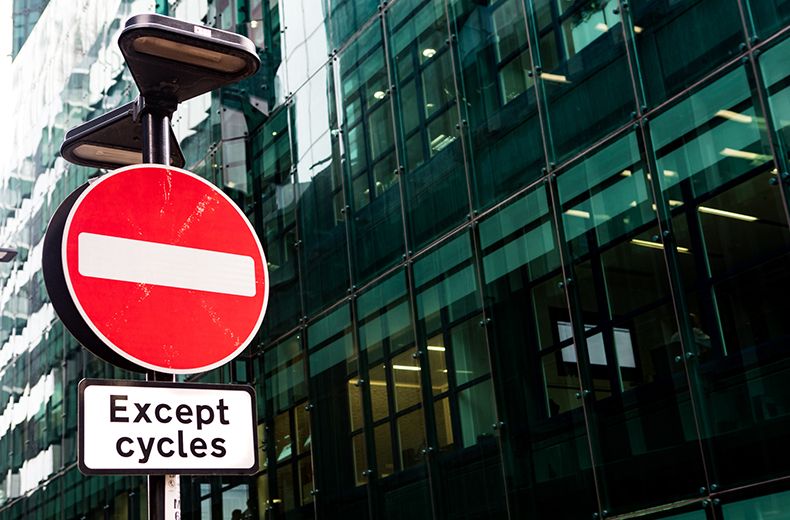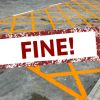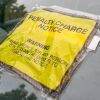A freedom of information request made by the RAC to all local authorities that currently have the power to enforce these offences in England and Wales – the London boroughs and Cardiff Council – found revenue from issuing penalty charge notices (PCNs) to drivers increased by 25% between the two financial years.
The Department for Transport confirmed2 on 27 July 2020 that it plans to extend these enforcement powers to all local authorities in England and Wales. Currently, local authorities outside of London and Cardiff only have powers to enforce bus lane contraventions.
Interestingly, the percentage increase in the number of PCNs issued was greater than the revenue increase. In 2016/17 councils issued 752,871 PCNs, rising to 1,007,405 in 2018/19 which equates to a 34% rise.
Yellow box junctions are by far the most lucrative, bringing in revenue of £31.4m in 2018/19 compared to £22.3m for ‘no turn’ offences and £4.4m for ‘no entry’ contraventions.
Looking at Cardiff alone, nearly four times as many penalty charge notices (PCNs) were issued in 2018/19 compared to 2016/17 (74,142 compared to 19,080) translating to a £1.8m hike in revenue (£593,160 to £2.4m – 313%).
The most profitable offences for Cardiff are ‘no turns’ yielding £1.4m in contrast to £826,424 for yellow box junctions and £182,782 for ‘no entry’ offences.
Of the London boroughs which provided data to the RAC a total of 933,263 PCNs were dished out in 2018/19, 27% more than two years ago (733,791). This, however, only translated to a 21% increase in revenues (£46.1m to £55.7m).
Yellow box junctions
Of the authorities which benefitted the most from the enforcement of yellow box junctions, Transport for London topped the table with a revenue of nearly £10m (£9,969,545 – 135,923 PCNs) in 2018/19, but in terms of single councils Hammersmith and Fulham was the runaway leader with a £3.5m yellow box revenue pot (from 53,576 PCNs) generated from 16 enforced junctions out of 23 in its area – £1.1m ahead of its nearest rival Redbridge on £2.4m (34,782 PCNs from 14 enforced junctions out of a total of 35). Merton, the only other council to pocket more than £2m in yellow box penalties, was third on £2.2m (31,081 PCNs from 27 enforced junctions, no overall total of junctions available).
In terms of average revenues per enforced junction, Westminster recorded the highest figure with a single junction generating £333,295 from 4,595 PCNs. Hammersmith and Fulham had the second largest average on £223,472 (£3.5m from 16 enforced junctions) and Richmond had the second largest average revenue with £156,117.
TfL has 399 yellow box junctions but declined to disclose how many are enforced.
No turn offences
Three authorities topped £2m in revenue from ‘no turn’ offences with Ealing even managing to outdo TfL with a revenue of £2.6m (from 44,612 PCNs) versus £2m (£2,093,651, from 28,978 PCNs). Hackney had the third highest total on £1,888,845.
No entry offences
Harrow was top for ‘no entry’ offences with a revenue of £549,785 followed by Southwark on £420,760 and Islington on £357,265.
- Our guide to box-junction fines
- Penalty Charge Notices – what are they and can you appeal?
- 10 driving offences you didn’t know were illegal
RAC head of roads policy Nicholas Lyes said: "It’s plain for all to see that London boroughs, TfL and Cardiff are generating phenomenal sums of money from the enforcement of moving traffic offences.
"The vast majority of drivers we’ve surveyed agree that those who stop on yellow boxes, make illegal turns or go through ‘no entry’ signs need to be penalised, but when it comes to extending powers to other councils many are concerned, with 68% thinking local authorities will rush to install cameras to generate additional revenue.
"Four in 10 drivers (39%) also believe that road layouts and signage will be made deliberately confusing to increase the number of PCNs issued. Clearly, the priority for enforcement should be to improve road safety and reduce congestion.
"The Department for Transport has decided to extend enforcement powers to other local authorities, however we believe guidance should be issued setting out where enforcement should be targeted and the types of signs that must be used to make drivers aware that enforcement cameras are operating, and for what type of moving traffic offence.
"It should also make clear the circumstances in which a PCN can be appealed and where mitigating circumstances may apply such as stopping in a yellow box to allow an emergency services vehicle to go by.
"We welcome proposals that first offenders are sent a warning letter before subsequent penalties apply. This is particularly important where changes are made to urban road layouts. What we do not want is this being seen by cash-strapped local authorities as a way to generate revenue.
"In addition, we would urge local authorities to publish annual reports of moving traffic offence receipts by type and by junction. We would also encourage them to monitor hot spots where an unusually high proportion of PCNs are issued as this is more than likely a clear indication of a problem with signage or road layout."
Have you been fined for a moving traffic offence before? Do you think the enforcement of these types of offence are fair on drivers? Let us know in the comments below.

RAC sale – up to 33% off*
• Roadside cover from £5.29 a month†
• We get to most breakdowns in 60 mins or less
• Our patrols fix 4/5 breakdowns on the spot












